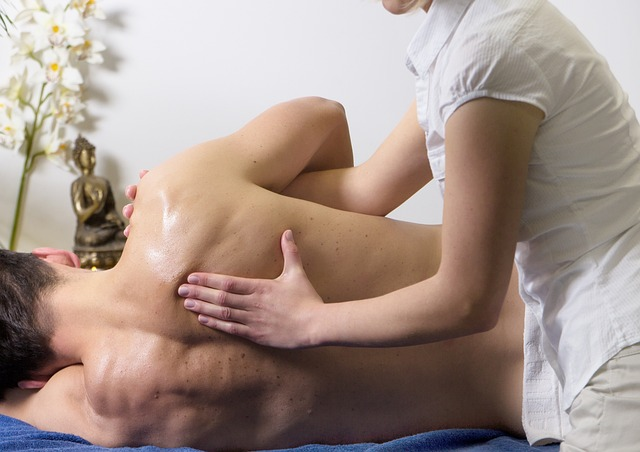Wondering how to prevent painful shoulder injuries? Effective preventive care for shoulder injuries not only saves you from discomfort but can also maintain your active lifestyle. This article delivers practical tips and strategies on how to strengthen and protect your shoulders from common injuries, grounded in an understanding of shoulder anatomy and mechanics. Dive in for a comprehensive approach to preventing one of the most common joint injuries.
Key Takeaways
- Preventing shoulder injuries is crucial for maintaining an active lifestyle and shoulder joint health relies on balancing the flexibility and strength of surrounding muscles and tendons.
- Effective strategies for preventing shoulder injuries include proper warm-ups, strength training, correct exercise techniques, and sports-specific precautions to maintain joint health and reduce risks.
- If shoulder pain persists or the range of motion is limited, it is important to consult a shoulder specialist, like those at Plancher Orthopaedics & Sports Medicine, which offers expert care and advanced treatment options.
The Importance of Preventing Shoulder Injuries

Shoulder injuries can be quite debilitating, hindering not only your daily activities but also any occupational responsibilities that depend on upper body strength and mobility. From carrying groceries to throwing a baseball, our shoulders are involved in a wide range of motions, making them susceptible to various injuries. Hence, for an active and pain-free lifestyle, it’s important to take preventive measures against shoulder injuries.
One might question the susceptibility of our shoulders to injury. A better understanding of the shoulder joint structure can provide the answer, as we will discover in the following section.
The Shoulder Joint
Our shoulder is a complex structure, consisting of several bones, including the collarbone (clavicle), shoulder blade (scapula), and upper arm bone (humerus), multiple joints, and over 30 muscles and 6 major ligaments. This complex design provides our shoulders with incredible mobility. However, this mobility comes with a cost – reduced stability. The ball of the upper arm is larger than the shoulder socket, and the joint heavily relies on surrounding soft tissues for support.
These soft tissues, such as muscles, tendons, and ligaments, are vulnerable to injury. Frequent involvement of the rotator cuff, biceps tendon, labrum, and joint capsule, as well as misalignment or imbalance, can lead to abnormal movement patterns and injuries. Thus, maintaining equilibrium in flexibility between internal and external rotator muscles is significant in preventing injuries.
A thorough comprehension of the intricate anatomy, inclusive of stabilization roles, contributes to the effectiveness of preventive care for the shoulder joint.
Common Shoulder Injuries
Shoulder injuries are quite varied, ranging from mild strains to severe tears. One of the most frequently experienced shoulder injuries is the rotator cuff injury, which can range from tendinopathy to complete tendon ruptures. Other common problems like subacromial impingement syndrome, involving structural damage in the subacromial space, often lead to rotator cuff issues and shoulder pain. Among these issues, rotator cuff injuries are particularly concerning due to their potential impact on daily activities and overall shoulder function.
Inflammation and pain can be triggered by various conditions in the shoulder, including:
- Bursitis
- Tendinitis
- Torn rotator cuff (if left untreated)
- Tendinosis (chronic wear and tear)
- Shoulder dislocations
- Shoulder separations
These conditions can be caused by factors such as blunt force or a fall. It is important to seek treatment for these conditions to prevent further damage and alleviate pain.
Not to mention fractures, which involve breaks in the shoulder bones due to impact trauma.
Strategies for Keeping Your Shoulders Healthy

The multifaceted strategy to prevent shoulder injuries encompasses:
- Proper warm-ups
- Strength training
- Core stability
- Upholding correct form and technique during exercises
It’s always advisable to consult with a primary care doctor before starting a shoulder strengthening program to tailor exercises to individual health needs.
Performing a warm-up routine before physical activities can help in the prevention of shoulder injuries. Moreover, incorporating cross-training into exercise routines helps reduce the risk of injuries from repetitive overhead movements. A balanced approach to strengthening and conditioning, accounting for the shoulder’s unique anatomy, is crucial to preventing chronic pain and injury from routine activities.
Warming Up and Stretching
Implementation of a proper warm-up routine is a must before indulging in any physical activity. Dynamic stretches, such as arm circles or shoulder rotations, specifically target the shoulder joint and are critical for warming up before physical activities to prevent shoulder pain.
Incorporating gentle stretches and exercises like jumping jacks, side-arm raises, or light weightlifting can effectively warm up the rotator cuff muscles before more strenuous activities. A shoulder that’s adequately warmed up can manage movements and loads more effectively, thereby minimizing the risk of injury.
Strength Training and Core Stability

Fortifying the muscles surrounding the shoulder joints aids in upper body exercises and daily activities while reducing the risk of injury. Poor conditioning and repeated impingement can set off a cycle of cuff damage and impaired function.
Effective shoulder and core strengthening exercises include:
- Scapular Y Raise
- Standing or Half-Kneeling Row/External Rotation/Press sequence
- Bottom-Up Kettlebell Press
- Regular arm rotations
These exercises enhance stability, support the rotator cuff, and prevent injuries. Overdeveloped front shoulder muscles can lead to imbalances with rear muscles, increasing overuse injury risks, but gradual weight and intensity increases in strength exercises prevent muscle strain and tears while maintaining proper muscle balance.
Proper Form and Technique
Executing exercises properly, like the Scapular Y Raise, boosts endurance and encourages correct muscle usage. Maintaining a neutral lumbar spine and avoiding lower back hyperextension during exercises like the Standing or Half-Kneeling Row/External Rotation/Press is vital for shoulder health.
Proper form in exercises involves keeping the shoulders down and back, engaging the core, and controlling the motion of the arms to safeguard the shoulder joint during weightlifting and use of gym equipment. Shoulder injuries often result from improper technique or form, such as poor mobility, lack of strength, or repetitive low-energy transfer over time in everyday activities that can harm the rotator cuff.
Sports-Specific Prevention Tips

Athletes, particularly those engaged in sports like baseball, tennis, and rugby, should follow sport-specific prevention tips to reduce the risk of shoulder injuries, which are among common sports injuries. Each sport presents unique demands and challenges for the shoulder, which require tailored prevention strategies.
Baseball Pitchers
Baseball pitchers are at a higher risk of shoulder injuries due to the repetitive overhead motions required by the sport, which can lead to excessive wear and tear on the shoulder joint. Excessive wear and tear can result in a variety of injuries including rotator cuff tears, shoulder instability, and labrum tears.
Incorporating strength training, especially of the rotator cuff and scapular muscles, is critical for baseball pitchers to help balance and stabilize the shoulder. Proper pitching mechanics and not overusing the pitching arm by adhering to pitch count guidelines can help prevent injury. Preventive measures for baseball pitchers should also include regular intervals of rest during the season and adequate off-season recovery time.
Upon the occurrence of injuries, baseball pitchers need to partake in inappropriate rehabilitation, potentially involving a physical therapist who will provide therapy aimed at restoring range of motion, strength, and correct pitching form.
Tennis Players
Tennis players, as participants in overhead sports, are also susceptible to shoulder injuries due to the repetitive overhead movements common in the sport. To reduce acute shoulder injury risks, tennis players should avoid repetitive overhead movements and use equipment suited to their body size, strength, and skill level.
Incorporating cross-training and varied exercises can aid tennis players in avoiding shoulder imbalances and preventing overuse injuries.
Rugby Players
Rugby, as a high-impact sport, places tremendous strain on the shoulder. Proper tackling technique and form are critical to preventing shoulder injuries in rugby players due to the high-impact nature of the sport. Incorporating rugby-specific agility and plyometric drills can help prepare players’ shoulders for the dynamic and unexpected aspects of the game.
Rugby players should train to strengthen not only the rotator cuff muscles but also the scapular muscles to endure the demands of scrummaging, tackling, and ball handling. Some exercises that can help include:
- External rotation exercises with resistance bands
- Shoulder press exercises with dumbbells
- Push-ups and bench presses
- Rows and pull-ups
Balance and proprioceptive exercises are also beneficial in enhancing joint awareness and control among rugby players, which reduces the chances of sustaining shoulder injuries through awkward movements.
While not a substitute for proper technique and conditioning, protective shoulder pads can provide additional injury protection for rugby players engaged in high-impact activities.
When to Consult a Shoulder Specialist

Despite implementing the best preventive measures, shoulder injuries can unexpectedly occur. In such instances, a consultation with a shoulder specialist is advised. There are several key signs to look out for when determining if it’s time to seek professional medical advice.
Persistent Pain
Persistent shoulder pain, particularly unresponsive to rest, medication, or physical therapy, or persisting beyond a few weeks, necessitates evaluation by a shoulder specialist. Shoulder pain that occurs during rest or disrupts sleep, suggesting conditions such as frozen shoulder or rotator cuff problems, requires a consultation with a specialist.
Individuals with a history of shoulder injuries must seek medical evaluation for new symptoms or a re-injury, especially when pain persists without improvement. Degenerative conditions and other diseases contributing to shoulder problems or causing radiating pain may also necessitate a specialist’s care.
Limited Range of Motion
Conditions such as adhesive capsulitis, commonly known as frozen shoulder, can lead to severe limitations in shoulder motion due to inflammation and adhesions. Symptoms like a progressive reduction in shoulder motion, often called ‘frozen shoulder,’ signal the need for a potential specialist visit.
Medical attention should be sought if there is an inability to move the arm, extreme pain at the injury site, or sudden worsening of shoulder pain. Difficulty performing shoulder movements or daily tasks, especially following a past injury, should prompt a consultation with a shoulder specialist.
Previous Injuries
Individuals with previous shoulder injuries have a heightened risk for subsequent injuries or complications. Complications from previous injuries can include chronic pain, reduced range of motion, and a predisposition to arthritis. Patients must be attentive to recurrent symptoms, as these may indicate unresolved issues or the development of new problems.
For individuals who have suffered from previous injuries, regular check-ups with a shoulder specialist are vital to secure long-term joint health and maintain a healthy shoulder.
The Role of Plancher Orthopaedics & Sports Medicine in Shoulder Injury Prevention
When it comes to shoulder care, Plancher Orthopaedics & Sports Medicine, led by Dr. Kevin Plancher, is a leading name. The practice specializes in Orthopaedics and Sports Medicine for knee, shoulder, elbow, and hand injuries, utilizing minimally invasive techniques to treat various orthopedic conditions, including shoulder injuries.
Expertise and Experience
Dr. Plancher is esteemed for his expertise and innovation in the fields of orthopedics and sports medicine. With a focus on shoulder surgery, Dr. Kevin Plancher brings extensive experience in treating shoulder injuries, advancing the field of preventive care.
Dr. Plancher has been consistently recognized as a Top Doctor from 2021 to 2024, marking him as a leading figure in his field.
Advanced Treatment Options
Plancher Orthopaedics & Sports Medicine utilizes state-of-the-art robotic surgery options to provide advanced treatment for shoulder injuries. In addition to shoulder care, patients have access to innovative treatment options such as knee replacements and ACL treatments.
The practice is acclaimed for its use of minimally invasive techniques, offering patients less disruptive treatment choices.
Summary
In conclusion, shoulder health is crucial for an active and pain-free lifestyle. Whether you’re a professional athlete, a fitness enthusiast, or simply someone who enjoys active hobbies, understanding how to prevent shoulder injuries and when to seek professional help is essential. Remember, it’s always better to be proactive than reactive when it comes to your health.
Frequently Asked Questions
How can a rotator cuff injury be prevented?
To prevent a rotator cuff injury, avoid repetitive overhead arm movements and consult a physical therapist for safer alternatives. Additionally, incorporate low-resistance exercises with increased repetitions to gradually strengthen shoulder muscles.
How do you care for a shoulder injury?
To care for a shoulder injury at home, follow these steps: Apply ice for 15 minutes, then rest for 15 minutes, repeated 3 to 4 times a day for 2 to 3 days. Rest the shoulder, gradually return to regular activities, and consider taking over-the-counter pain medication. If directed by a doctor, use a sling and apply cold packs or moist heat as needed.
How does the shoulder joint prevent injury?
The shoulder joint prevents injury by being surrounded by ligaments, a joint capsule, and muscles that provide stability and strength during movement. These elements enable us to perform daily and recreational activities without risking injury.
When should I consult a shoulder specialist?
You should consult a shoulder specialist if you experience ongoing shoulder pain that doesn’t improve with activity modification or a progressive reduction in shoulder motion. Seeking early intervention can prevent further complications and aid in effective treatment.
Who is Dr. Kevin Plancher?
Dr. Kevin Plancher is a renowned orthopedic surgeon and sports medicine expert who leads Plancher Orthopaedics & Sports Medicine, known for his expertise in the field.




 William D. Murrell, MD
William D. Murrell, MD Thomas B. Evely, DO
Thomas B. Evely, DO Clifford Voigt, MD
Clifford Voigt, MD Karthikeyan Chinnakkannu, MD
Karthikeyan Chinnakkannu, MD Max N. Seiter, MD
Max N. Seiter, MD Demetris Delos, MD
Demetris Delos, MD Lauren M. Fabian, MD
Lauren M. Fabian, MD